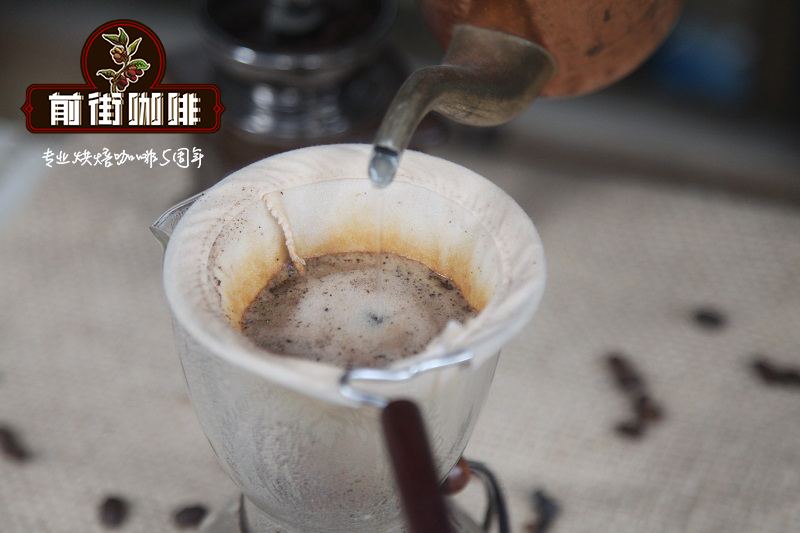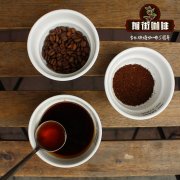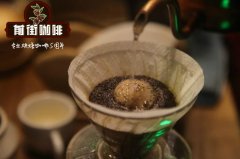A kind of pure flavor brief introduction of hand brewing coffee with ─ flannel filter cloth

Professional coffee knowledge exchange more coffee bean information please follow the coffee workshop (Wechat official account cafe_style)
Some people say that the coffee brewed with flannel filter cloth shows the maximum flavor of coffee.
After a taste, you can feel the strong flavor spread all over the body from the tip of the tongue, the aroma of coffee floats in the throat, and the taste gradually wakes up in the beautiful chemistry.
Please listen to the editor to tell you about this beautiful legend.
A brief introduction to the history of flannel
Flannel filter cloth originated in Japan, and its brewing method requires constant practice and patience in order to show the purest fragrant smell of coffee, which coincides with the spirit of Japanese craftsmen. There are few records of flannel filter cloth in history, but it is generally believed that it appeared from the end of the 19th century to the beginning of the 20th century.
In the early 17th century, Dutch merchants introduced coffee to Japan, when only one port was opened for trade, and few people knew about the existence of coffee. The coffee industry did not flourish until 1888, when the first tea shop (a teahouse that sells both tea and coffee) opened in Tokyo.
The trend of tea shops promotes the maturity of coffee technology, and in order to pursue better extraction technology, many coffee utensils have been developed. When the Japanese coffee utensils brand Hario began to launch glass appliances, the brewing method of flannel filter cloth began to become the most fashionable choice.
Characteristics of flannel coffee
The production process of flannel coffee is very special. Generally, hand-brewed coffee is brewed with filter paper, while the "flannel follicle method" uses filter cloth. Although unique, but because of the complex cleaning process, coupled with high brewing skills, few people are willing to try. However, the so-called "bitter before sweet", under the flannel bubble method, the hard process will bring a sweet wine-like taste, do not miss it!
Flannel filter cloth because the fiber is thicker than ordinary filter paper, fat will be adsorbed on flannel, so that water and coffee powder have sufficient time to contact, blend, and have a stronger flavor.
Another secret of flannel coffee is that its "soluble solid particles" are smaller than ordinary brewed coffee, so it tastes particularly mellow and smooth.
The way flannel is cooked
The taste is mellow and thick, and very sweet are several characteristics of flannel filter cloth hand-brewed coffee. However, it takes considerable skill to brew a cup of sweet and tasty flannel coffee. Boiling water temperature and water injection rate will affect the taste and flavor of the coffee. How to make flannel coffee step by step? The secret lies in the following steps.
Brewing appliances:
Flannel filter cloth, enamel hand punching pot, flannel special filter pot, thermometer.
Step by step:
1. Soak the newly purchased flannel filter cloth in boiling water to clean and sterilize, and then put on the metal ring when finished.
two。 Use the time of soaking filter cloth to grind beans. Due to the structure of the material, the amount of beans used in flannel coffee is generally more when using filter paper, about 20 grams per person (depending on the size of flannel), and the thickness is about the size of fine sugar (between V60 filter cup and KONO filter cup). The ratio of powder to water also needs to be adjusted properly. It is recommended that the ratio of powder to water should be around 1: 10 and 1: 12. If the concentration is different, it can be diluted with water in the later stage.
3. Dry the filter cloth, it is recommended to use a clean absorbent cloth to dry, put on the filter pot.
4. Pour the hand punch to 6-7 minutes full, preheat the filter cloth and drip filter, and then pour out the hot water.
5. Pour the coffee powder loosely and collapse slightly in the center. There is no need for special compaction.
6. Hot water with a suitable temperature (85 ℃-95 ℃) measured by a thermometer begins to boil into the pot, circle around the center outside and inside, and finally fill the center with water the size of an one-dollar coin to avoid flannel filter.
7. When the water injection reaches half of the required amount, stop the water injection and wait for the coffee powder to drop to almost expose the powder bed, start the second water injection, from the inside to the outside.
8. When the water injection reaches the desired amount, it can be stopped and wait for the remaining hot water to flow down.
9. Finish the brewing process, warm the coffee cup, pour in, and enjoy a cup of fragrant flannel coffee.
Cleaning instructions for flannel filter cloth
The characteristic of flannel coffee is that it can retain the oil of the coffee and give it a mellow flavor. However, due to the material of the filter cloth, it is not easy to clean the grease, so it must be cleaned and stored in the freezer. If you use it frequently and the accumulated oil has affected the coffee extraction, you can wash it with enzyme powder or baking soda.
Although the filter cloth will be cleaned after use, the filter cloth must be boiled in hot water for more than three minutes before use to avoid bacteria breeding and affecting health.
Making flannel coffee is a stress release. Brew at a slow pace, quietly inject patience and expectation, leisurely in the space full of coffee, to find the purest flavor of life.
END
Important Notice :
前街咖啡 FrontStreet Coffee has moved to new addredd:
FrontStreet Coffee Address: 315,Donghua East Road,GuangZhou
Tel:020 38364473
- Prev

The third wave of boutique coffee pursues more coffee flavor performance and pays attention to regional flavor.
Professional coffee knowledge exchange more coffee bean information please follow the coffee workshop (Wechat official account cafe_style) the third wave of boutique coffee more pursuit of coffee flavor performance, pay attention to regional flavor, so the degree of roasting will be relatively shallow, in order to express the different flavor performance of different coffee producing areas. Coffee shops like Starbucks represent the second wave of coffee culture.
- Next

What is Oak Barrel Coffee? What flavor does oak barrel processed coffee have? Oak Barrel Coffee
Professional coffee knowledge exchange More coffee bean information Please pay attention to coffee workshop (Weixin Official Accounts cafe_style) Oak barrel processing refers to placing coffee beans in used wine or spirits barrels for several weeks, during which they need to be manually turned. Green coffee beans are affected by the taste of wine or spirits left in the barrel, and these newly produced flavors are
Related
- What is the meaning of lactic acid fermentation with coffee bean treatment?
- How to judge the state of foam by sound?
- How does the latte pull out the unicorn pattern? Come to get for a little trick to improve the flower pull!
- Will flower pulling affect the taste of the latte?
- Do you know the history of coffee?
- The difference between honey treatment and sun washing what is raisin honey treatment?
- What kind of milk can a novice use to make coffee foam to keep the foam longer? The correct method and skills of milking tutorial sharing
- Why do washed coffee beans taste sour? Flavor characteristics of washed Coffee
- Introduction to the skill of how to practice the size and height of water injection around the circle of hand-brewed coffee
- How do beginners practice coffee flower drawing from scratch?

